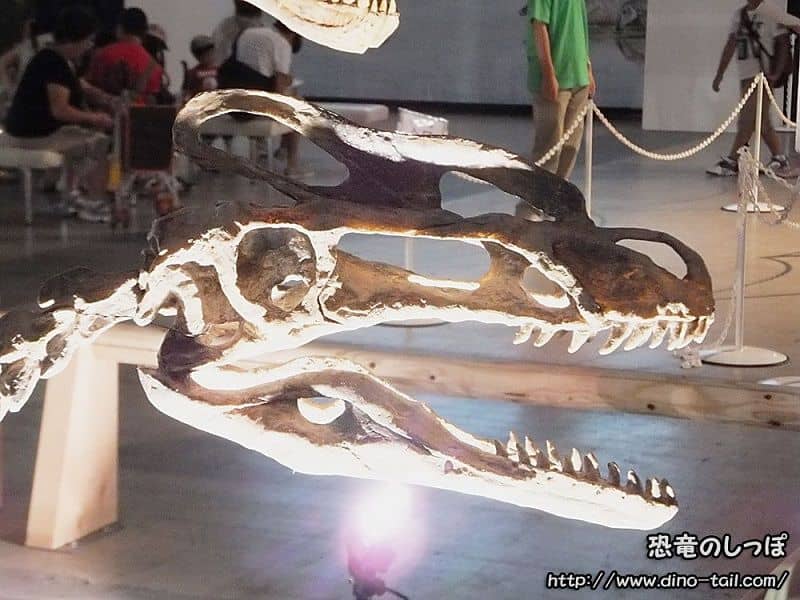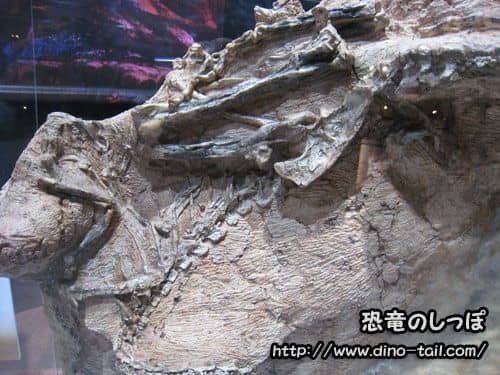About Guanlong
| Scientific Name (Genus) | Guanlong |
| Meaning of Name |
Crowned dragon
Guan (crown) [Chinese] - long (dragon) [Chinese] |
| Classification | Saurischia, Theropoda (Tetanurae, Tyrannosauroidea) |
| Total Length | Approx. 3m |
| Diet | Carnivorous |
| Period | Late Jurassic |
| Species | Guanlong wucaii |
| Year of Paper Publication | 2006 |
Characteristics

The most distinctive feature of Guanlong, which also gives it its scientific name, is the large, well-developed crest (crown) on its head. This crest was made of very thin bone and was hollow inside. Therefore, it would not have been useful as a weapon or for defense, and it is thought to have been a display structure for species recognition or to attract mates.
Although there is no direct evidence from the fossils, the discovery of primitive feather (protofeather) impressions in its close relative from a slightly later period, Dilong, makes it almost certain that Guanlong was also covered in downy, jacket-like feathers.
Although it was a Late Jurassic theropod discovered in China, it is presumed to be a direct ancestor of the North American tyrant, Tyrannosaurus.

The Oldest Tyrannosauroid
Guanlong was discovered in Late Jurassic strata (about 160 million years old) in China. As of 2021, it is the oldest known tyrannosauroid.

Two Guanlong individuals were buried here.
A detailed examination of this fossil revealed that the one on the bottom was a mature adult of about 12 years old, while the one on top was a young individual of about 6 years old. It sparks various imaginations: did the adult try to save the child who got stuck in a mud pit, or did they die at different times in the same place by chance? This site is also known as the "Dinosaur Death Pit."
While many tyrannosauroids had short forelimbs with two fingers, Guanlong had long forelimbs with three fingers. Although small at about 3m in total length, its teeth and sharp claws already showed a glimpse of the tyrant of a later age.
Including Dilong (130 million years ago, China) and Raptorex (125 million years ago, China), it is suggested that early tyrannosauroids evolved in Asia and eventually spread to North America.
Guanlong Stamp & Fossil Gallery


